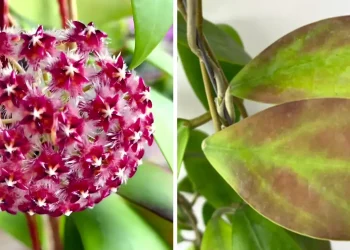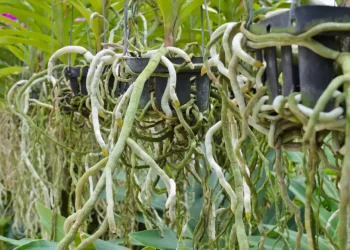For the time of the ancient Greeks, mint has been a cherished herb, valued for its versatility and its characteristic lingering cool effect. Today, mint can be found throughout many industries, some of which you would never have guessed.
Mentha, commonly known as Mint, comes with 24 known species, with the most common being Spearmint and Peppermint. But then you can see varieties like Sweet Mint. But what exactly is a Sweet mint? And is Sweet Mint the same as Spearmint?
All mint species have their unique taste, aroma, and usage. And the difference between sweet mint and spearmint is also not insignificant.
In this article, I will explain the key differences between sweet mint and spearmint. We’ll take a look at their appearance, aroma, taste, and use cases, not forgetting to compare their menthol content. There’s a lot to come; let’s dive right in!
What is Spearmint?
Spearmint is a widespread mint variety with the scientific name Mentha spicata. Although the word “spicata” sounds to me like it is supposed to be very spicy, spearmint is one of the least spicy species.
This hardy perennial plant hails from the mint family (Lamiaceae) and boasts bright green, serrated leaves with a distinctive spear-like shape, hence its name.
Spearmint gets its flavor from the chemical compound carvone. Although carvone and menthol, which you can find in peppermint, are both organic compounds that contribute to the cooling sensation associated with mints, they are not the same.
Spearmint is widely used in culinary, but it’s also known for its healing effects, such as the ability to relieve nausea.
What is Sweet Mint?
Sweet mint can be very confusing. When you buy a plant called “Sweet Mint,” it will be labeled as “Yerba buena.” Yerba buena translates as “good herb,” and it’s a Spanish word used to describe not only the whole family of true mints but also mint relatives.
This can mean many different things, but in 99% of cases, when you purchase “sweet mint,” you’re buying a peppermint variation with less menthol. Because of the lower menthol content, you get less of the cooling effect, and the sweetness comes upfront.
In the store, you can also see dozens of other types of mint, such as chocolate mint, pineapple mint, orange mint… All of these will probably have the label “Yerba buena” on them and are some variation of peppermint with a slightly different flavor profile.
What is the Difference Between Sweet Mint and Spearmint?
Now that you know a bit about both of these plants, let’s put sweet mint vs. spearmint face to face and see how they differ from each other in five different categories.
Here’s a quick summary. If you wish to learn more, keep reading.
Appearance
Sweet mint and spearmint share several common visual characteristics due to their shared mint family heritage.
Both varieties typically grow as hardy perennials with square stems and green leaves. However, upon closer inspection, you’ll notice subtle differences between the two.
Sweet mint leaves are often slightly rounder and may appear more serrated at the edges, while spearmint are more lance-shaped.
Additionally, sweet mint plants usually have a slightly lighter shade of green compared to spearmint, but you won’t be able to notice that without having the two plants next to each other.
Aroma and Taste
In aroma and taste, the difference between the two is most notable.
Sweet mint, true to its name, exudes a milder and sweeter fragrance compared to spearmint. The scent of sweet mint carries subtle fruity notes.
In contrast, spearmint has a more robust and vibrant aroma with a characteristic coolness. Its scent is often described as crisp and refreshing, and it’s the primary source of that classic minty freshness you find in chewing gum and toothpaste.
The differences in aroma extend to taste as well. Sweet mint offers a gentle sweetness that sets it apart. Its flavor profile is less intense and leans more toward the herbal side. I would say it’s not that overwhelming, which makes it a great addition to the kitchen.
Spearmint delivers a stronger, minty flavor with a refreshing, cool undertone. But you can find subtle spearmint varieties where the difference is hardly noticeable, apart from the fruity undertones present in sweet mint.
Menthol Content
Although the main compound found in spearmint is carvone, menthol is also present but in smaller quantities.
Spearmint sits around 0.5% menthol content. This results in a milder, less intense cooling sensation when you taste or smell spearmint.
Peppermint typically has around 7-48% of menthol. It’s hard to tell the exact menthol present in sweet mint, as sweet mint is a variation of peppermint and not a separate species. For that reason, everyone can call their peppermint plant as sweet mint. But sweet mint typically falls toward the lower end of the scale, often even below the typical range.
Use Cases
Bost sweet mint and spearmint find versatile use cases that cater to a wide range of culinary, aromatic, and even medical needs.
Because sweet mint is a very mild variation of peppermint, it is easily interchangeable with spearmint. But it will make sense to differentiate between the two in dishes where mint plays the lead role, as the taste profile varies slightly.
If we put aside the spicy punch or cooling effect, they still taste a bit different. I am sure you have had chewing gum with spearmint and peppermint flavors before. These two are usually differentiated in packed color – blue is for peppermint, and green is for spearmint.
So, their use case is more or less a thing of preference.
Conclusion
Both sweet mint and spearmint are in a lot of things similar. Their key difference comes from the fact that one is, well, spearmint, while the other is a peppermint variety.
Peppermints usually carry a lot more of the cooling effect and much more punch. But sweet mint, as the name suggests, is a variety that is unique in its higher sweetness and lower menthol content. But you could easily interchange one with the other in a lot of things.














